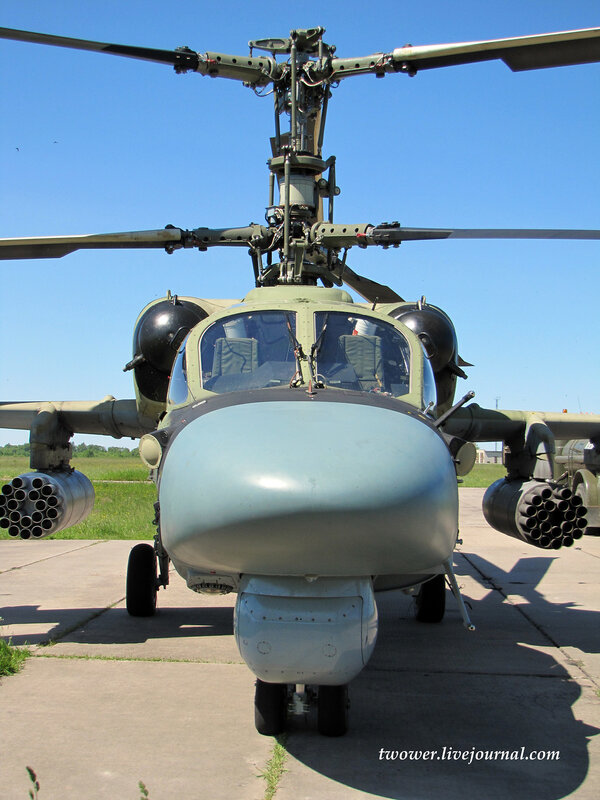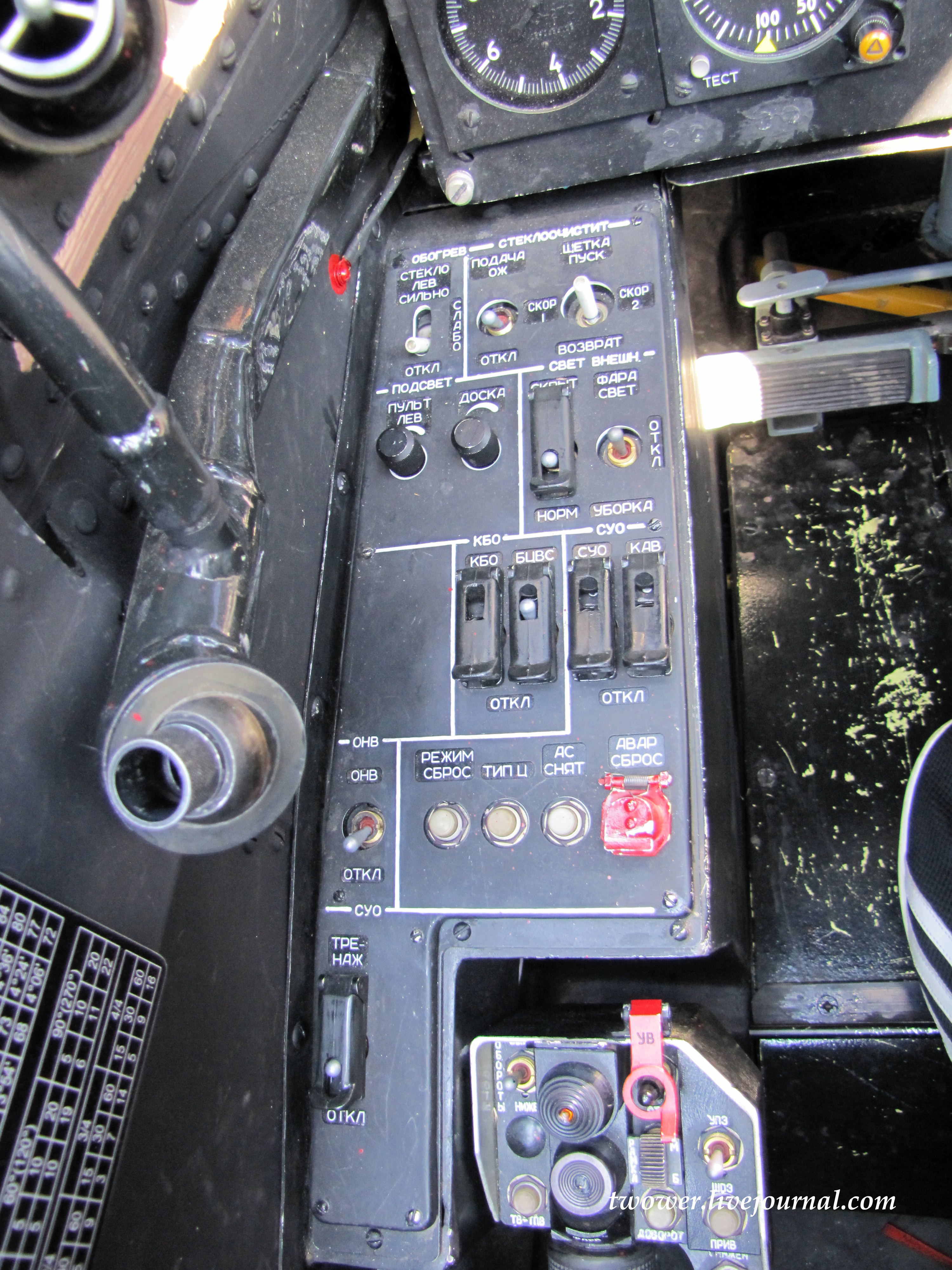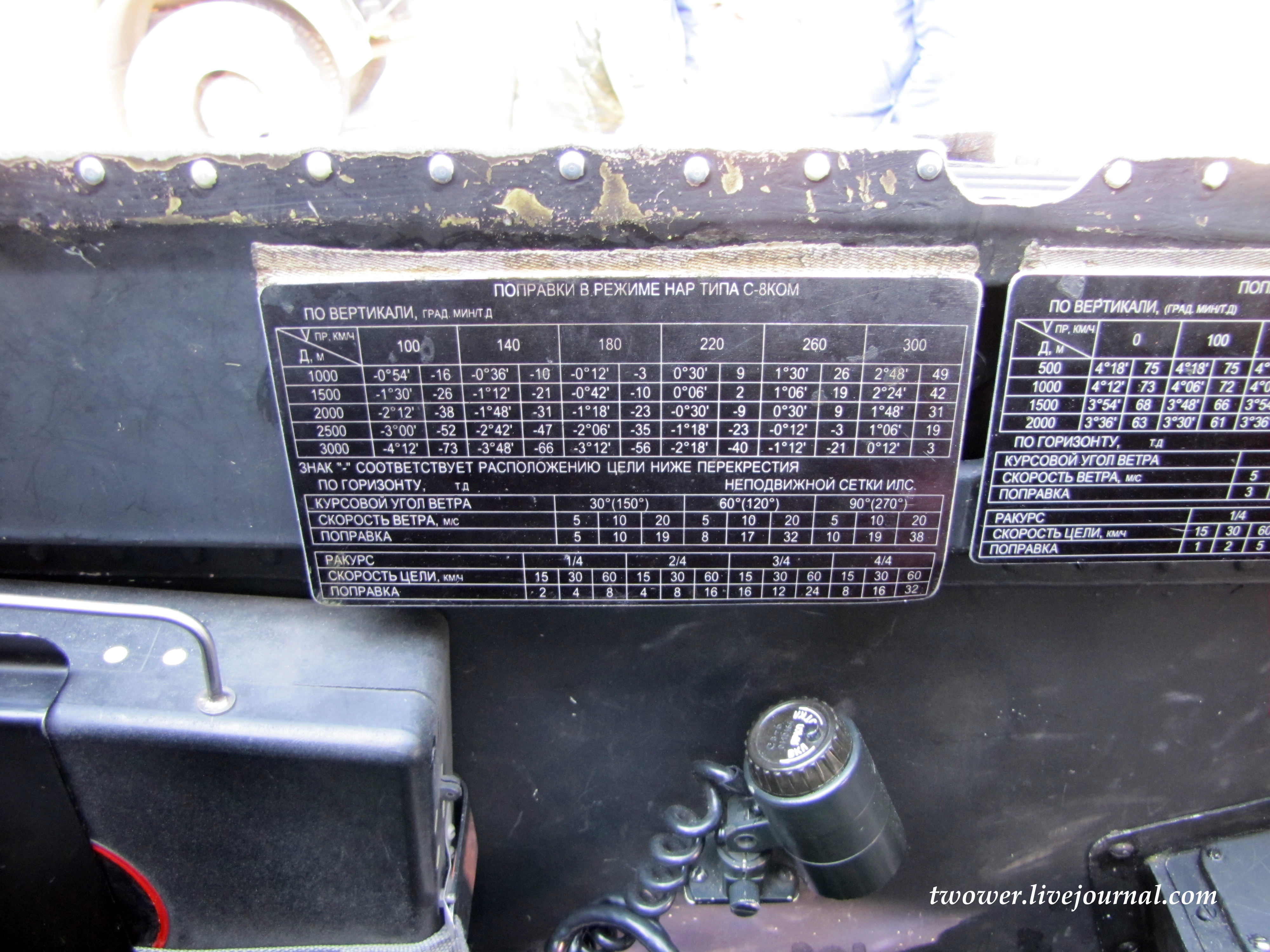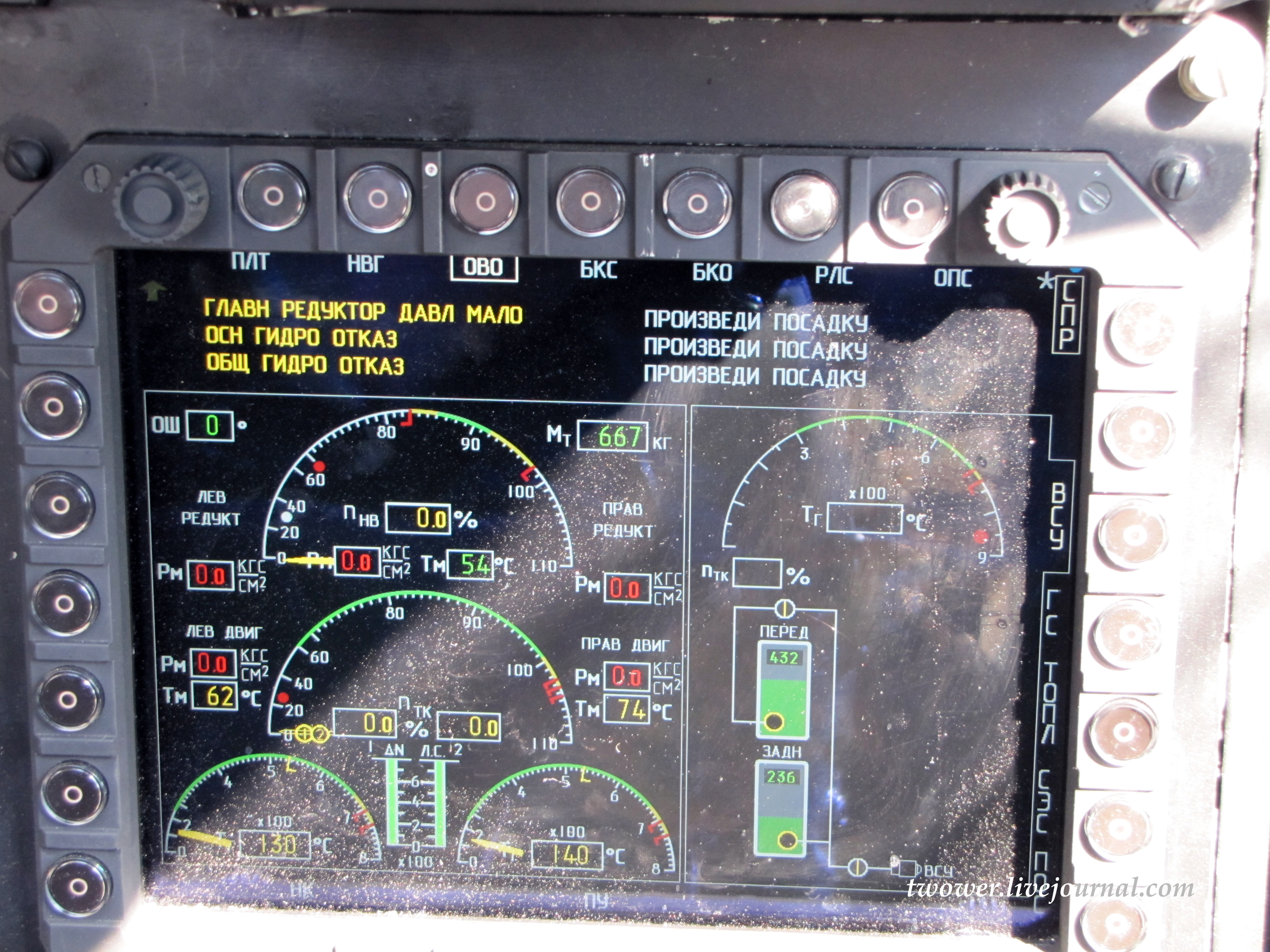Excellent video and pics were recently published by a Russian blogger from Torzhok Airbase. There is also an interesting discussion with the explanation for all details of Ka-52 cabin. Although the cabin still has a number analog devices, as used to be on Russian aircraft from different reasons, the MFD are rather informative and comfortable (the pilots opinion). However, some problems with the radar Arbalet still remain. Since Ka-52 doesn't contest in Indian attack helicopter tender, the high resolution pics of Mi-28N in the same Russian blog may be even more interesting for my Indian friends...
Havy pictures:
Havy pictures:
































Igor,
ReplyDeleteDo attack helicopters still have a future ? Anti helicopter mines have been designed that can identify helicopters by acoustic and radar Doppler shift signatures. Also Surface to air missile technology is a generation ahead of helicopter technology.
Do you believe the Apache's or the MI 28N can survive SAMs and Helicopter mines .
Helicopter mines are not new. I have seen models from the early 1980s that use self forging fragments that can be set up on hills near something that needs to be protected so that if an enemy helo approaches it will get a surprise.
ReplyDeleteHelicopters are like tanks... they perform a specific role on the battlefield and while the enemy will devise all sorts of means of defeating them the makers of helos will take steps to beat them too.
SAMs can shoot down Helos... SAMs can shoot down everything including ICBMs and Satellites.
That is not a good reason to stop making aircraft, ICBMs and Satellites.
The Ka-52 has DIRCM turrets near its main landing gear which will protect it from all sorts of optically guided SAMs.
SAMs guided by sound might have problems hearing an Mi-28N from 15km range where it will be launching Hermes missiles.
The Ka-52 has already been shown with pylon mounted boxes for UAVs that it can launch in flight to scout ahead and look for targets.
There is no reason why this cooperation could not be extended to Mi-28Ns and Apaches where the gunners control a UAV that scouts ahead for targets and threats especially allowing much longer ranged air to ground weapons to be used.
Most shoulder fired SAMs can't hit aircraft at more than 6km, and most larger SAMs can't hit targets hiding behind trees and hills at longer ranges.
It really is the same story as with the Main Battle Tank. It might look different in the future but there will always be a need for a powerful direct fire gun to support troops on a battlefield. With ERA and active self defence systems it might be much lighter, but the only thing that can replace a tank is something with excellent protection and a heavy powerful gun... ie a tank.
Helicopters are the same in that when used properly nothing else can do what they do.
When used with the right kind of aircraft like Su-25s or A-10s they are even better than either on their own.
GarryB,
ReplyDeleteI appreciate your observations . You are right that helicopters need to be used in tandem with SU 25s / A 10s . Inspite of this the US has lost a huge number of helicopters in Afghanistan and Iraq where local militia has just used RPG or Chines supplied SA 7 to cripple the Apache's and Black Hawks.
The Abraham tank has taken a severe beating in the streets of Iraq. Again IED's and RPGs were enough to cripple them.
Helicopters and Tanks serve as battle field weapons but in these days of assymetrical war they have lost purpose .
Here in India too we lost a MI 17 helicopter gunship in 1999 after it was hit by a Stinger missile fired by Pakistani soldiers.
I believe it is a better idea to invest more in SU 25s and A 10s than in helicopters . The only helicopters that should be used are UAVs like the Fire Scout.
Regards,
Anil
I think the problem is more complex than you suggest and the solution is also therefore more complex too.
ReplyDeletePart of the issue with western helos and their vulnerability to RPG attack is from the Western doctrine of hovering behind cover and firing guided weapons from a hover.
This originally was because their primary ATGM fired from a helo was the wire guided TOW so flying around while controlling that missile would lead to a snagged and broken wire and a missed target.
Russian and Soviet ATGMs have primarily been radio command guided and fired in forward flight so the threat from unguided RPGs is actually much lower.
You are correct that the US has lost a few helos but not enough to make their operations impossible.
In fact helicopter deployment is the preferred method because it avoids the IED problems.
If the Iraqis or Taleban had the support of a superpower like Russia with proper ATGMs and MANPADS the western forces would be suffering far more casualties and would not be able to operate in theatre at all.
Helicopters and Tanks are not ideal for guerilla campaigns... but their use in such campaigns is dictated by the fact that there are some things tanks and helos can do that other platforms cannot.
I think a combination of new technology like MANTA DIRCMS and standoff weapons like Hermes can make helicopters effective and safe in all sorts of battlefields.
There is no such thing as a safe weapons platform in war... everything has a countermeasure and a counter countermeasure.
It is like saying a bullet proof vest wont stop a cannon shell so why bother wearing it... the simple fact is that bullet proof vests stop most shell fragments and light projectiles that kill rather more soldiers than bullets do.
There might be weapons that will defeat a helo, and if you use a helo badly you might make it even more vulnerable to being destroyed. Hovering behind a tree is one example because anyone behind you can fire a rocket at your rear and you can't see it till it hits you and makes you flying forward into that tree a likely reaction to being hit.
They have learned that a tree will not offer 360 degree protection and that for most trash fire simply flying forward is their best protection because it is very difficult to judge lead distances to get hits with forward flying objects using unguided projectiles.
With new Helos fitted with DIRCMS like MANTA:
http://www.scorpion.com.gr/overview-manta.html
then it becomes even harder to kill them with missiles like Stinger and Igla.
More importantly it is better to use Mi-17s like what they are... armed transports that need protection and distance from threats.
If you want to land special troops near enemy forces equipped with MANPADS then you need DIRCMs and other systems to protect them... otherwise don't use them for that.
Both the Soviets and the US have found the mobility of helos in Afghanistan to be invaluable and no UAV can replace them in the role of real gunship most of the time.
Look at the period before Stinger arrived in the 1980s... the Soviet gunships dominated even without thermal sights and night vision equipment and targeting systems they have now.
Igor and GarryB,
ReplyDeleteCan Indians apply for jobs in the Aerospace & Defense Sector in Russia or does Russia only hire Russian citizens just like US and UK ?
Regards,
Ramesh
Except for joint ventures I would suspect they would require Russian nationality and citizenship as a bare minimum for defence related jobs and likely security clearance would be required for jobs in sensitive areas of work.
ReplyDeleteFor an Indian National it might be easier to get a job with an Indian company that has a joint venture with a Russian company.
For a New Zealander like me there are even fewer options... especially as I don't speak or read Russian which would be a huge obstacle.
Ok, that means that even I don't have any chance either of working in Russia . Most JVs that Russia has with India are with Indian Govt. Companies and they hardly have any vacancies .
ReplyDeleteAlso, I don't speak/read Russian. Russian is taught in India by a few institutes but the course fee is extremely high around $500 - $1000.
I would think that speaking Russian would be one of the first requirements and the standard of reading and writing would probably be pretty high to ensure communication problems don't effect your work standard and productivity level.
ReplyDeleteWould be cool to work for a high tech Russian defence company but it would not be so cool having to keep your work secret.
For example I would probably have to stop posting on forums on the internet... which might drive me crazy. :)
Or some might say more crazy... :)
That's True . But I guess even if you start working for an Aerospace Company in New Zealand or Australia , the rules of secrecy will be the same :).
ReplyDeleteHey Ramesh,
ReplyDeleteBRAHMOS is hiring in Hyderabad . Travelling required between Moscow and Hyderabad.
Give it a shot.
Best,
Sujoy
If you sign up for Russian language class it will look good on your CV.
ReplyDeleteIf you then get a job it will be easier to get some tutoring in Russian in Russia if you are going to be spending time there.
Best of Luck.
Do you have any idea why the Ka-52 was chosen over the proposed Ka-50-2 tandem-seat variant? Wouldn't a tandem seating configuration be better for an attack helicopter than side-by-side seating?
ReplyDeleteGautam,
ReplyDeleteKa-50-2 never consider as a project for the domestic Army. It's purely export project. Current Ka-52 cabine satisfies the domestic customer.
Why was the Ka-52 chosen for the Russian Navy over the Mi-28N? Didnt the Russian Air Force reject the Ka-52 for Mi-28?
ReplyDeleteThe sie-by-side seating was specificaly chosen for what were considered it´s superior characteristics for a 2 crew attack helicopter. You can question that assessment, but if Russia accepted that assessment in the first place, why would they act contrary to it? As seen by recent procurement, they are more than happy with the Ka-52.
ReplyDeleteThank you for answering. Does the Russian Army have any plans to integrate a terrain-following radar on the Ka-52? I assume the Arbalet has limited capability in this regard?
ReplyDeleteI believe it´s planned to integrate Phazotron´s AESA into the Ka-52, which should certainly be able to interlace air and ground modes, and I suppose linking that with the flight controls is a possibility.
ReplyDeleteI wouldn´t assume Arbalet is incapable of that role (ground following is simpler radar-wise than SAR mapping, GMTI, etc), but can´t say either way...???
-----------------
Yeah, Ka-52 was rejected for all but spec forces operations by the air force... But now it has a huge new order putting it on par with Mi-28, way more than just what is needed for the mistrals. So I don´t think assuming that the reasons for the rejection are still valid is a good idea...
Gautam,
ReplyDeleteThe Army is satisfied with the current Ka-52 and only wants more number, so I think the night capability of the aircraft is rather enough even without a terrain following radar and no plans for this in near future.
@Anon
ReplyDeleteIt was a long story.
The first trials were held in the 1980s and the Ka-50 was against the Mi-28A, and in comparison the Ka-50 had superior weapon range and was easier to fly and was only slightly worse than the Mi-28A in terms of maintainence and support so they picked the Ka-50.
Then Desert Storm showed that night operations were safer for helicopters in terms of enemy action, so they reviewed their tests and decided to hold another competition with new requirements for night flying.
Night flying at low level is a full time job so while the highly automated attack system of the Kamov worked well during the day, at night there was a need for an extra crewman to find targets and help the pilot.
For the new tests the Kamov bureau offered the Ka-52 with side by side seating for better communication and to minimise weight.;
In the tandem configuration there is no chance of direct personal communication so there is often armour between the cockpit positions.
In the side by side seating arrangement you save two large side areas of armour for each crewman which reduces weight and allows direct communication. With helmet mounted sights linked to EO balls under the nose the long range and all weather visibility from the cockpit is not impaired either. More importantly each crewman will look over their side of the aircraft for things like threats or targets, while in a tandem both have to look over the whole field of view and it is possible that both could be looking to the same side and miss something attacking from the other side.
Anyway the Mi-28N was deemed cheaper and effective enough and less radical than the Kamov and was chosen in the second competition.
Both aircraft have spent 20 years in limbo waiting for funding to get them to actually work properly and now that they are funded they are getting there, though the Mi-28N will go through a few changes yet to become the Mi-28M.
The Kamov was chosen because its coaxial rotor makes it more efficient at high altitudes for use by special forces in mountains, but the order has recently been expanded.
It will also be adapted for naval use with folding blades and wings for use from Mistral carriers and even destroyers if needed.
@Gautam
ReplyDeleteThe Ka-52 is not exactly just an attack helo.
It is more of an armed recon helo like the commanche was going to be.
The Erdogan was specially redesigned to meet Turkish requirements and was a joint development with Israel... so I don't see that going forward for Turkey, and the Russian Air Force has no requirement for seating or gun position.
The radar fitted to the Mi-28N gives it automatic terrain following capability... which is unique AFAIK for helos. It certainly impressed the Swedes apparently.
I don't see any reason why terrain following features could not be added, but I would prefer ground attack features be perfected first.
@Anon
The AESA planned for the Ka-52 will likely be fitted only to naval Ka-52s for air policing duties at sea.
The original order for about 32 Ka-52s was a bit small and would probably have made development and operation more expensive than it needed to be.
There are to be several mountain units within the new military structure and these units would benefit from Ka-52 support due to its better hot and high performance due to its rotor system.
Igor and GarryB,
ReplyDeleteWill it make sense for Russia to come up with a helicopter similar to the V 22 Osprey ? I am quite certain that such an aircraft can make a huge difference in special forces operation in Chechnya , Kashmir and will have great export potential in Asia and South america.
Regards,
Ramesh
Ramesh,
ReplyDeleteMethink the future is for high speed helos with additional horizontal thrust, Osprey has too unreliable design.
GarryB,
the order for 160 additional Ka-52 till 2020 is recently signed (confirmed by Oboronprom). They said because Ka-52 has better integrated weapon and more advanced radar. The contract for Mi-28 is only for 100 aircrafts (38 is allready produced. So, it is not little anyway.
@Ramesh
ReplyDeleteThe Osprey has not really be challenged... there is little if any MANPADS in Afghanistan and I am still not convinced.
I actually liked the larger four engined V-44 which looked rather more balanced and would have simpler flight characteristics.
I agree with Igor and I think the Russian designers are looking at tail mounted propellers for increased forward flight speeds and this makes rather more sense.
DIRCMs in helos is a higher priority in my opinion as the Osprey shares the same fault as any large helo... when landing or taking off or sitting on the ground it is incredibly vulnerable.
@Igor
Thanks for that. Hope they sort out their systems with the Mi-28... they are talking about an Mi-28M which has new EO system and a new nose with cannon shells stored in the nose cheeks instead of boxes either side of the gun to improve aerodynamics and increase ammo load.
A new larger nose should allow for a shift of the ground search MMW radar antenna to the nose of the aircraft, but I still like all the radars above the main rotor because it means the aircraft doesn't need to expose its airframe to scan for targets.
Perhaps a fresh start with new radar antenna technology might make a difference... some fixed AESA antennas with electronic scan could be more compact and efficient...
GarryB,
ReplyDeleteThe rotor installed radar is in development but the difficulties are more than expected early. Hopefully it can be ready on Mi-28M.
Ramesh ,
ReplyDeleteFurther to what GarryB and Igor have said I would say that the Osprey is a an expensive model of blandness . The US is working overtime to hide all records of the number of crashes of the Osprey.
Vortex Ring state alone has contributed to half the crashes.
The aircraft lacks a heavy-duty, forward-mounted machine gun to lay down suppressing fire against forces that will surely try to shoot it down. And if the plane's two engines are disabled by enemy fire or mechanical trouble while it's hovering, the V-22 lacks a helicopter's ability to coast roughly to the ground.
Moreover , there is a huge maintenance costs that goes behind maintaining the Osprey.
As far as your suggestion on special forces operation in Chechneya and Kashmir is concerned I recon the Indian army is considering purchasing unmanned helos that can carry special forces to terrorist hideouts . In all likelihood Russia too will invest more heavily in the near future in Unmanned Aircrafts that can carry out surgical operations and some that can carry troops.
There is no need for an Osprey in Russia or India.
Regards,
Sujoy
@Igor
ReplyDeleteI have every confidence they will sort out the problems with the radar... I just hope they don't get tunnel vision and miss some new developments in radar technology and end up with a 1990s radar in a 21st C machine.
@Anon
The Ka-52 was chosen over the Mi-28N for naval use because of Kamovs unparalleled experience with the Navy. For the ground crew of a helo the most dangerous part is the tail rotor.
A sudden wind change or even just a wind gust can force the pilot to choose between swinging the tail around to keep the nose of the helo pointed into the wind, or to tip the helicopter into the direction of the incoming gust to maintain its position. The first swings the tail rotor around the landing area and the second lowers the main rotors to head height... both of which are enormously dangerous for anyone on the ground next to the helo.
At sea on the restricted space on a ship there is often no where to run so the absence of a tail rotor is incredibly important on the deck of a ship that might be rising and falling a significant amount.
Of course the coaxial design does have the problem of height which can be allowed for by increasing the height in the hangars, but the Ka-25 and Ka-32 show that with rotor blade folding systems and in the case of the Ka-52 wing folding as well these aircraft take up very little space in their hangars.
Note the Ka-52 will be used on Mistral, but not the same Ka-52 as used by the Army.
The Naval model will have folding main rotor blades and folding wings and will likely have a nose mounted AESA radar better suited to use at sea and for use against air targets and sea targets.
Congratulations Mr Igor for the photos, it would be very nice to see the same thing for the Kamov KA50. This my project: KA50 www.kamov.tk , thanks for watching !
ReplyDeleteBest regards , Cpt. Adrian Kamov.
off white nike
ReplyDeletefear of god
ggdb outlet
jordan shoes
bape official
air jordan travis scott
kyrie 8
goyard outlet
cheap curry shoes
jordan outlet